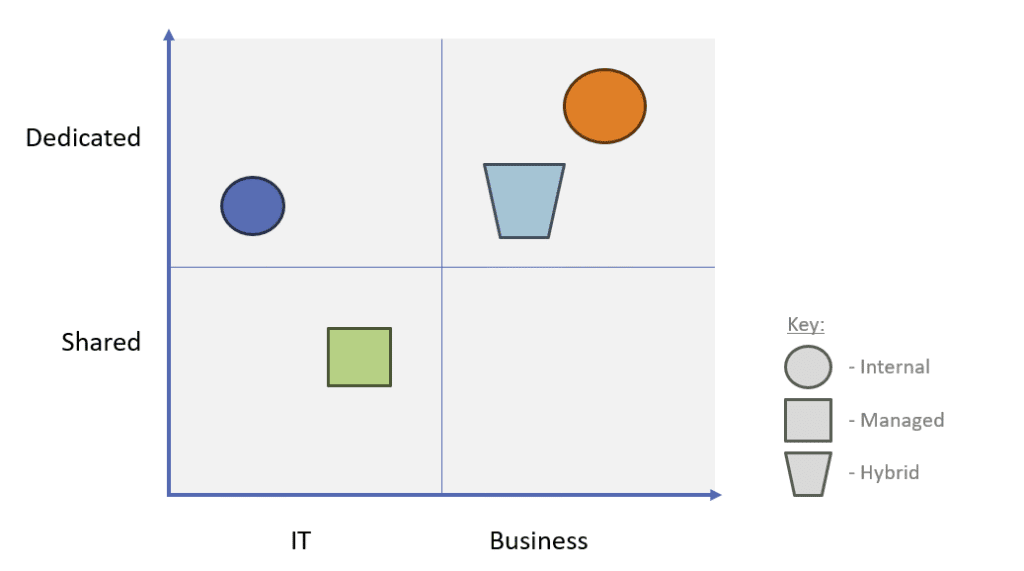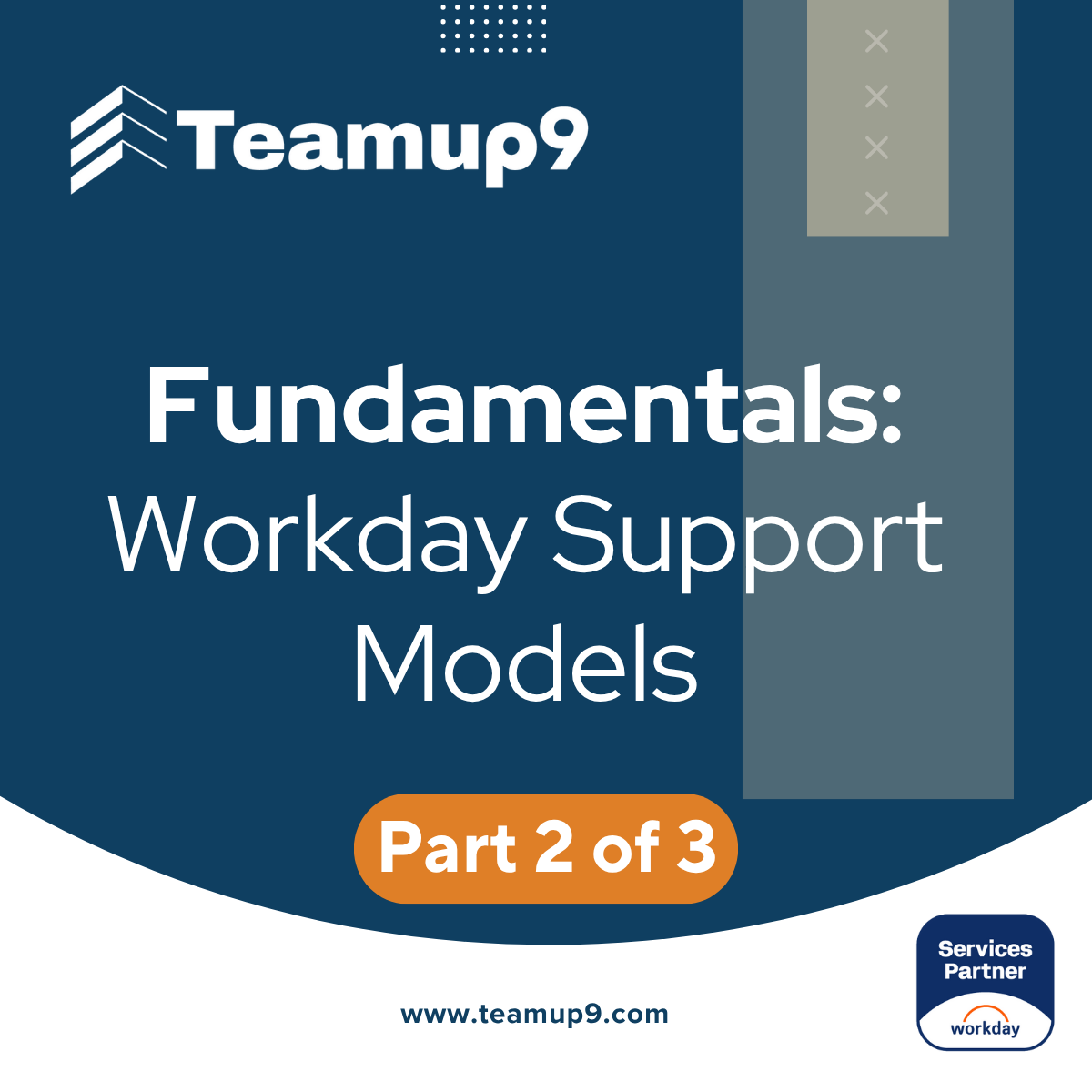As described in Part 1 of our Series: Implementing Workday is a significant investment that promises agility and efficiency for your organization’s HR and Finance functions. However, maximizing this value over the long term depends entirely on having a robust and well-chosen Workday support structure. An effective support model is not merely overhead; it’s a powerful enabler of business transformation.
As Workday systems are not static — they evolve with bi-annual feature releases and must adapt to organizational and regulatory changes — the support model you choose will determine your ability to scale effectively. This second part of our series explores the foundational models available to help you find the right fit for your unique needs.
1. Workday Support Ownership: IT vs. Business (or Hybrid)
Modern ERP systems like Workday often blur the lines between traditional IT maintenance and business process management. Since many changes can be performed via configuration and without coding, functional users can play a larger role. Leading organizations to adopt hybrid ownership models. The primary ownership models vary based on the nature of the support area:
- Configuration and Business Process Support: Functional teams, such as HR, Finance, or Payroll, may own functional issues, security configurations, report creation, and process changes. This ensures the system directly aligns with business needs.
- Technical Support: The IT department manages the core infrastructure, single sign-on (SSO), integration maintenance, data security standards, and any customizations built outside the Workday environment.
- Hybrid (Governance): This shared model often involves establishing a Workday Center of Excellence (COE) or Governance Committee. Composed of key IT and Business stakeholders, this group manages the bi-annual update cycles, prioritizes enhancement requests, and ensures strategic alignment between both sides.
Where does your organization place on this spectrum? Are Configuration tasks handled by IT or Business resources?
2. Resource Allocation: Dedicated vs. Shared
The complexity and scale of your Workday deployment will often dictate whether your support team is fully dedicated to the platform or shares its time across multiple systems.
| Model | Structure | Best Suited For |
| Dedicated | A full-time team (e.g., Functional Analysts, Integration Specialists) focused only on Workday. | Larger enterprises with highly complex global footprints, or companies using a broad suite of Workday products (HCM, Financials, Planning). |
| Shared | Analysts and IT staff split their time, supporting Workday alongside other applications. | Organizations with simpler deployments or those that primarily use Workday for core HR, as this structure is common for cost efficiency. |
Where does your organization place on this spectrum? Is team specialized on supporting just Workday?
3. Personnel Models: Internal vs. Vendor-Supported
Most organizations utilize a combination of internal employees and external vendors to maintain and support their Workday environment.
- Internal Only: Full-time employees handle all support, maintenance, and development tasks. While this offers deep institutional knowledge and control over priorities, it risks burnout during bi-annual updates and can lead to difficulties retaining highly specialized talent.
- Application Managed Services (Vendor-Supported): The client outsources routine support, technical maintenance, and help desk coverage (Tier 1/2) to a consulting partner. This provides access to a broad pool of certified consultants, $24/7$ coverage, and flexible staffing.
- Hybrid (Most Popular): This model offers the best balance. The client maintains a small internal team for strategy and complex business configuration (the Core team) and supplements this with an external vendor for Tier 1 support, bug fixes, and specific technical projects.
Where does your organization place on this spectrum? Are you fully self-sufficient or are you leveraging vendors?

Conclusion
Choosing the right combination of ownership, resource allocation, and personnel is a strategic decision that directly influences your system’s stability, user satisfaction, and future scalability. Workday support structures on the client side vary significantly, and the best model for your organization will blend these elements to align with your size, complexity, and internal capabilities.
Ready to determine the optimal support model that will turn your Workday investment into a true business enabler? Contact Teamup9 today, and our experts will guide you through an assessment to choose the best support structure for your organization.
Do you want to know the best practices for operating your support structure? Stay tuned for Part 3 of our series, where we’ll dive into the operational details for Workday support.


